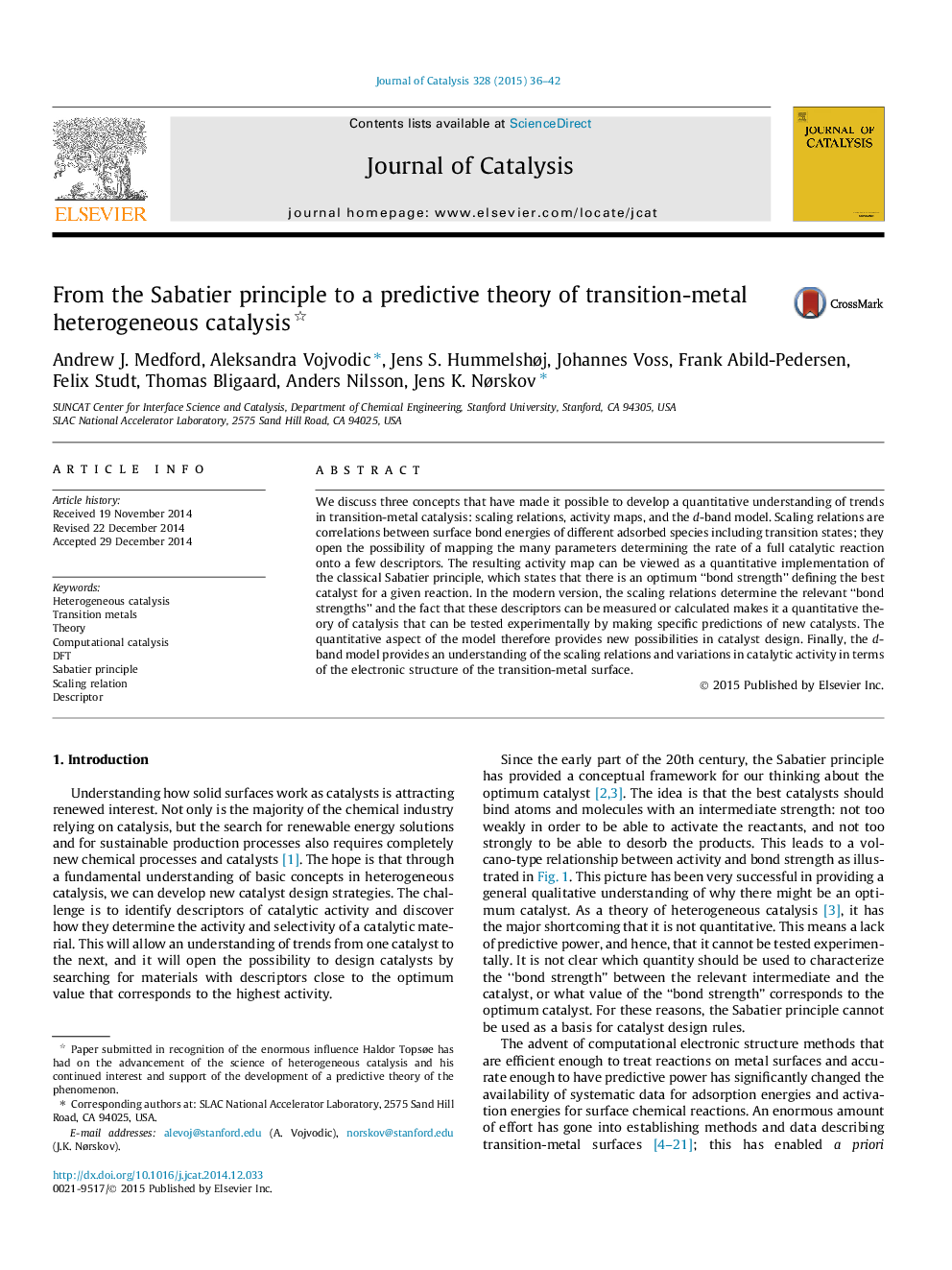| کد مقاله | کد نشریه | سال انتشار | مقاله انگلیسی | نسخه تمام متن |
|---|---|---|---|---|
| 60761 | 47547 | 2015 | 7 صفحه PDF | دانلود رایگان |

• Metal catalysis theory from scaling relations, activity maps, and d-band model.
• Bond strength in Sabatier principle is given quantitatively from scaling relations.
• Implications of quantitative metal catalysis theory for the search of new catalysts.
• Computational approach illustrated by NH3 synthesis and CO hydrogenation reactions.
We discuss three concepts that have made it possible to develop a quantitative understanding of trends in transition-metal catalysis: scaling relations, activity maps, and the d-band model. Scaling relations are correlations between surface bond energies of different adsorbed species including transition states; they open the possibility of mapping the many parameters determining the rate of a full catalytic reaction onto a few descriptors. The resulting activity map can be viewed as a quantitative implementation of the classical Sabatier principle, which states that there is an optimum “bond strength” defining the best catalyst for a given reaction. In the modern version, the scaling relations determine the relevant “bond strengths” and the fact that these descriptors can be measured or calculated makes it a quantitative theory of catalysis that can be tested experimentally by making specific predictions of new catalysts. The quantitative aspect of the model therefore provides new possibilities in catalyst design. Finally, the d-band model provides an understanding of the scaling relations and variations in catalytic activity in terms of the electronic structure of the transition-metal surface.
Figure optionsDownload high-quality image (159 K)Download as PowerPoint slide
Journal: Journal of Catalysis - Volume 328, August 2015, Pages 36–42